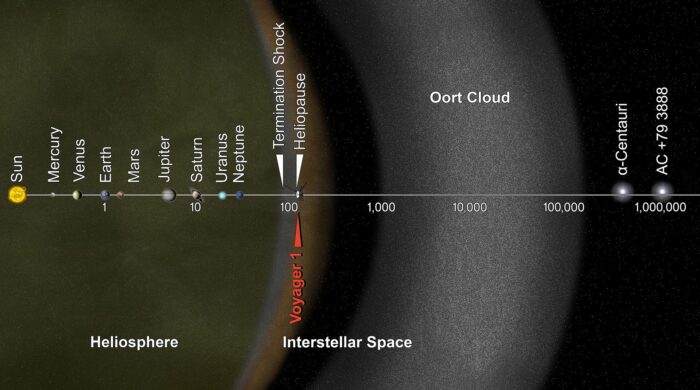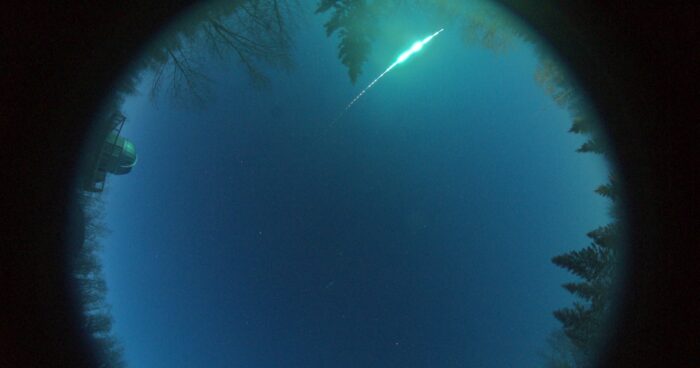Astronomers have used data from February 22, 2021 to retrace the origin of a remarkable explosion in the sky.
The bolide, or fireball, was seen in the night sky about 100 km (60 mi) north of Edmonton. The fireball is caused by a small chunk of asteroid, comet, or a meteor hitting our atmosphere at super high speeds. Friction causes the chunk to heat up, burst into flames, and disintegrate.
Though this happens many times a year, some are more spectacular than others. Like this February 2021 bolide! At the time, its explosion had been caught on many security cameras, creating some fun viral videos. In fact, here is a compilation of dozens of them.
No matter how many times we see that fireball, it's always remarkable!
But the question remains: Where did the fireball come from? Sure, space. But where in space?
Oort Cloud
Thanks to new research from the University of Western Ontario, astronomers believe that they know. By retracing its trajectory toward Earth before it exploded, they believe that the bolide came from the Oort Cloud. And if they're correct, this discovery is changing a few assumptions about what that region of space is made of.
First, let's begin with what the Oort Cloud even is! This is an enormous collection of tiny objects that surround our solar system. They are far, far beyond the traditional boundaries of our solar system. Case in point, Voyager 1, the first spacecraft to go interstellar (or leave our solar system) back in 2012, won't reach the Oort for another 300 years!
Ice or rock?

A diagram of the Oort Cloud, as it stands outside our solar system. The image is not to scale, meaning that the cloud is actually much further out that it looks here. (Wikimedia Commons)
But despite being so far away from us, our solar still receives visitors from the Oort. These include 'long-period comets' that orbit the Sun at intervals of many millions of years! Usually, these objects are very icy as well (they are made of some mixture of ammonia, methane, and water ice). Along with other data, this has led to the theory that the Oort Cloud is made up of icy materials.
But an analysis of the February 2021 bolide indicates that it exploded similar to how a rocky object would break up. (An icy object would've broken up much higher up in the atmosphere.) And usually, rocky bolides come from an area much closer to Earth. Which raises a question: Is the Oort Cloud full of rocky objects as well as icy ones?
Given how little scientists actually know about the Oort Cloud, it is very possible! Here is a video breaking down why a rocky object coming from the Oort Cloud is considered so interesting.
 Footage of the unusual fireball that hit above Alberta on February 22, 2021. (University of Alberta)
Footage of the unusual fireball that hit above Alberta on February 22, 2021. (University of Alberta)









